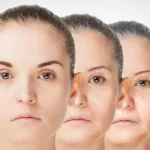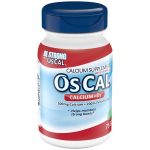Magnesium for Health: Benefits, Dosage, Side Effects, Sources

Magnesium is an essential mineral that plays a crucial role in the proper functioning of the human body. It is involved in numerous physiological processes and is required for maintaining optimal health.
One of the primary benefits of magnesium is its ability to regulate blood pressure, ensuring it stays within a normal range. Additionally, magnesium contributes to the strength and health of bones, making it essential for maintaining bone density and preventing conditions like osteoporosis. Another vital role of magnesium is its contribution to maintaining a steady heart rhythm, which is vital for cardiovascular health.
Unfortunately, many individuals in the United States do not consume enough magnesium-rich foods, leading to a potential deficiency. Insufficient magnesium intake has been linked to elevated inflammation markers in the body. Chronic inflammation is associated with various serious health conditions, including heart disease, diabetes, and certain types of cancer. Furthermore, low levels of magnesium have been identified as a risk factor for osteoporosis, a condition characterized by weak and brittle bones.
Research suggests that a diet rich in magnesium and other essential minerals can help prevent high blood pressure, particularly in individuals with prehypertension. Consuming foods high in magnesium or taking magnesium supplements can be beneficial in maintaining blood pressure within a healthy range.
In some medical situations, intravenous or injected magnesium may be used to treat specific conditions. For instance, it can be administered to manage eclampsia during pregnancy or to alleviate severe asthma attacks. Magnesium is also a primary ingredient in many antacids and laxatives, where its properties help relieve symptoms associated with digestive disorders.
Although severe magnesium deficiencies are rare, certain individuals are at a higher risk. People with kidney disease, Crohn’s disease, or other digestive disorders, as well as those with parathyroid problems, may be prone to magnesium deficiencies. Additionally, individuals taking specific medications for diabetes and cancer, older adults, and those who abuse alcohol are also more likely to experience low levels of magnesium. In such cases, healthcare providers may recommend magnesium supplements to address the deficiency.
It is worth noting that the use of proton pump inhibitors (PPIs), a common type of medication used to treat acid reflux, has been associated with lower magnesium levels. Examples of PPIs include dexlansoprazole (Dexilant), esomeprazole (Nexium), lansoprazole (Prevacid), omeprazole (Prilosec, Zegerid), pantoprazole (Protonix), and rabeprazole (Aciphex). If an individual takes any of these medications on a long-term basis, their healthcare provider may monitor their magnesium levels through blood tests to ensure adequate magnesium intake.
The recommended dietary allowance (RDA) for magnesium is determined based on age, sex, and life stage. It represents the average daily intake of magnesium that is considered sufficient to meet the nutrient requirements of most healthy individuals. The RDA takes into account magnesium obtained from both dietary sources and supplements, if any.
Here are the current RDA values for magnesium:
| Category | Recommended Dietary Allowance (RDA) For Magnesium |
| CHILDREN | |
| 1-3 years | 80 mg/day |
| 4-8 years | 130 mg/day |
| 9-13 years | 240 mg/day |
| FEMALES | |
| 14-18 years | 360 mg/day |
| 19-30 years | 310 mg/day |
| 31 years and over | 320 mg/day |
| Pregnant | Under 19 years: 400 mg/day 19 to 30 years: 350 mg/day 31 years and up: 360 mg/day |
| Breastfeeding | Under 19 years: 360 mg/day 19 to 30 years: 310 mg/day 31 years and up: 320 mg/day |
| MALES | |
| 14-18 years | 410 mg/day |
| 19-30 years | 400 mg/day |
| 31 years and up | 420 mg/day |
It’s important to note that these values may vary depending on individual circumstances, such as specific health conditions or special dietary requirements. Some individuals, such as athletes, pregnant or breastfeeding women, and people with certain medical conditions, may have higher magnesium needs and should consult with their healthcare provider to determine their optimal intake.
While it’s generally recommended to obtain nutrients from food sources, magnesium supplements may be advised in cases of deficiency or when dietary intake is inadequate. However, it’s always best to consult with a healthcare professional before starting any new supplements to ensure they are appropriate for your specific needs.
Natural Sources of Magnesium
Natural food sources of magnesium are indeed the best way to incorporate this mineral into your diet. Here are some examples of foods rich in magnesium:
• Green, leafy vegetables: Spinach, kale, Swiss chard, and collard greens are excellent sources of magnesium.
• Nuts: Almonds, cashews, and peanuts are all magnesium-rich nuts.
• Beans, peas, and soybeans: Black beans, chickpeas, lentils, and soybeans are good sources of magnesium.
• Whole-grain cereals: Oatmeal, quinoa, brown rice, and whole wheat are examples of whole grains that contain magnesium.
It’s important to note that natural whole foods tend to retain their magnesium content better than processed or refined foods. Processing and refining can result in the loss of magnesium and other essential nutrients.
Risks and Considerations
While magnesium supplements can be beneficial in certain cases, there are some risks and considerations to be aware of:
• Side effects: Taking magnesium supplements can sometimes lead to side effects such as nausea, cramps, and diarrhea. Additionally, magnesium supplements may cause softening of the stool.
• Interactions: Magnesium supplements may interact with certain medications, including diuretics, heart medicines, and antibiotics. It is advisable to consult with your healthcare provider before taking magnesium supplements if you are currently taking any medications.
• Risks: Individuals with specific health conditions such as diabetes, intestinal disease, heart disease, or kidney disease should seek guidance from their healthcare provider before starting magnesium supplementation.
• Overdose: Taking excessive amounts of magnesium can result in an overdose. Symptoms may include nausea, diarrhea, low blood pressure, muscle weakness, and fatigue. In extreme cases, a magnesium overdose can be fatal.
It’s important to maintain a balanced approach to magnesium intake, focusing on obtaining it primarily from natural food sources and discussing the use of supplements with a healthcare professional to ensure safe and appropriate dosages.




